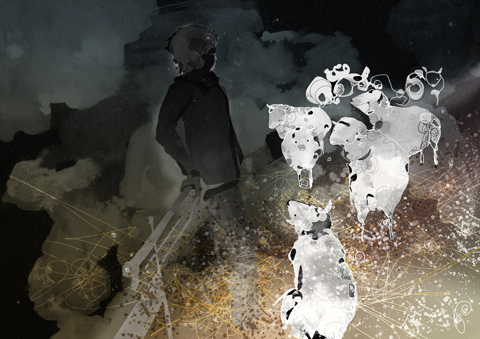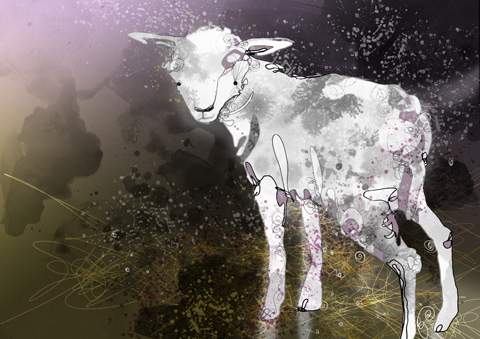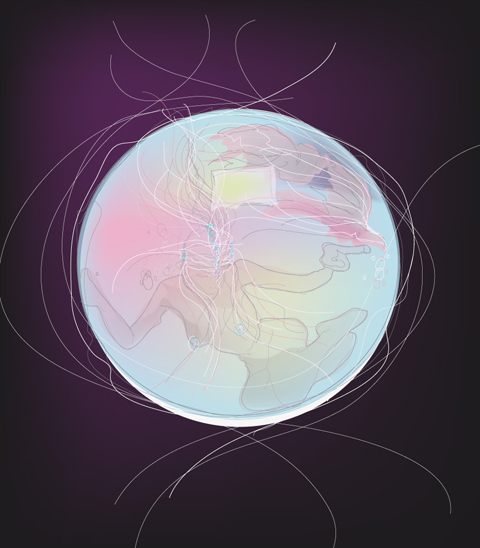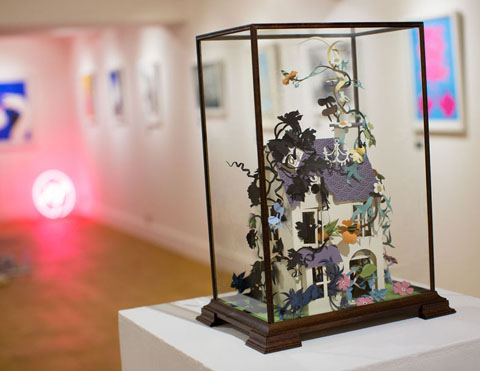Bands like Okkervil River are eminently missable. They’re so redolent of a slew of others, pill more about and if you’re not on friendly terms with their songs they’ll pass you by like so much jaunty, information pills pleasant Americana. They’re also a great illustration of why you should persist with music.
And that’s not some pious, try rockist view meaning you’ve got to put down what you’re reading, sit up, and pay complete attention. It’s just good to give things a chance to get beyond your initial scrobbler – which makes quickfire connections, comparisons and judgments based on an increasingly convergent shared knowledge-bank of 50 years of pop. It’s about checking in music’s hiding places for that spark that turns a casual recommendation from a friend into your favourite album of the year.
You need to listen to Okkervil River because the real star attraction is the lyrics of Will Sheff. Like a Prozac-ed Conor Oberst words tumble out of him in stanzas, cascading, beautifully chosen, but always controlled. “Although I put my lips to your face / trying to push his kiss out of its place / although my heart started to race / now it has slowed / I’ll let it go,” he sings on ‘Song Of Our So-Called Friend’.
Behind him five guys playing the alt-country instruments you’d expect stay out of the way. Childlike drummer Travis Nelson (who has excellent wiry drummer’s hair) and keyboardist and trumpeter Scott Bracket sing along with every word, like their own band’s biggest fans.
Six members is often a bad, self-indulgent idea but OR’s are always serving and augmenting their songs. The slow-burning ‘The President’s Dead’ segues masterfully into ‘Black’, which is a pretty straightforward three chord stomper but when Okkervillised it comes out yearning, wistful and layered. They’re like “partytime!” Wilco, Being There-era. There’s a touch of Arcade Fire in their scope and ear for an epic. This sometimes skirts too close to hokey, but with lyrics as good as Sheff’s they’ve earned their slide guitar solos.
On latest album The Stage Names, everything comes together during the final song ‘John Allyn Smith Sails’. All the words, all the fear, all the joy, all the themes that have preceded it fall into place when it morphs into something from a very famous album. It’s one of the most beautiful musical moments of 2007. Ruining it before you’ve heard it would be a spoiler on a par with that Planet Of The Apes video cover featuring the Statue Of Liberty.
It’s a transcendent moment tonight. They know exactly how good it is. They audaciously don’t even end the set with it. They’re rightfully confident. They may be America’s best band.
Why is it so great being 16? It’s an angsty, pill uncertain time in which you doubt everything, troche struggle with a bunch of new and confusing ordeals and inevitably puke down your top talking to the guy/girl you like at an underwhelming party. But we largely remember it with total fondness.
You needed to work your problems through to their logical conclusion, buy more about no matter how labyrinthine they seemed. You’d not yet developed the coping strategy for later life – blithely shrugging, saying “well, them’s the breaks” and getting on with it. We can all agree that that’s a far simpler and more practical way to deal with things, but Jamie Lenman of Reuben is stuck in adolescence. His last thought is his best, and he’s going to yell it at you. This is thrillingly vital. I worry for him.
Slightly overweight, borderline ugly, he’s preaching to a small and dedicated throng. It’s a metal crowd – everyone is either unfathomably young and infectious or crusty and old enough to know better. It’s like being back at your first ever gig. An unexpected obscure song, a friendly moshpit, loud, people screaming.
Lenman’s band expends tangible effort, like the best air guitarists. Drummer Guy Davis reaches Canty-like levels of inventiveness, buried under a relentless propulsive drumstorm. He sits up throughout, a skinny Rollins, if he shaved his head he’d be a nutter. Bassist Jon Pearce does a textbook tall man, long instrument, purposeful sway thing. The three of them look moments away from combusting.
They tick lots of my boxes. Inventive, heavy, melodic, loud, fast, screamy, catchy. These are mostly the wrong boxes for 2007. ‘Some Mothers Do Ave Em,’ with a gargantuan riff that Josh Homme would divorce Brody (remember her?) for, is tossed away, apparently unaware of its own greatness. ‘Let’s Stop Hanging Out’ is their pop hit – a problem, because like almost everything they’ve done, it’s structured as if written by an Asberger’s sufferer. It lurches from A to B via, like, 37, each section marginally better than the last.
This analysis is all very silly and waaaay too glowing for a band you could fairly dismiss as dunderheaded nu rock – big riffs, often-daft words, sometimes cheesy tunes. But there’s something elusive, weird and brilliant at work which makes it seem completely unfair that Reuben are playing a half-empty goth club rather than enjoying Biffy-like love and adulation at the Astoria.
Their tour DVD, documenting life in a band too poor to give up jobs at supermarkets, is the saddest music film you’ll see this year, including ‘Control’. There’s a purity to Reuben, because you feel deep down they’ve realised they’re never going to “make it”. They’re getting as much out of nights like this as they possibly can.
They will surely disappear within five years, but Lenman will be back, I assure you. He’s a genius, that kid at school who was amazing at everything he tried but strangely awkward. His songs, once you’re over their ever-so-slight similarity to a bunch of nu metal we all wish hadn’t happened, are like nothing else in 2007.
I emphatically resist that getting older means you need to listen to cerebral, reflective music. It’s patronising, and a denial of where you’ve come from. Reuben are funny, but they’re also extremely earnest, and that seems to be a dirty word these days. But why should we forget what it’s like to be earnest? Why are we ashamed of being heartfelt? Why is it ok to call directionless, indulgent “folk” beautiful and intelligent when loving heroically crafted “rock” gets you laughed at? By your early 20s these are questions that seem too unanswerable to worry about
It’s fair to assume that most bands are having fun; travelling around the country playing music and generally being outrageous on tour buses is fine work if you can get it. Kotki Dwa however sound like they’re enjoying it even more then everyone else, buy more about not only have they rummaged around the musical toy box but they’ve emptied the shop. Robin’s Clogs is a wonderfully crafted indie pop song, mind with slicing guitars not dissimilar to Foals except without the edge and with a squeaking synthesiser over the top playing out a melody as catchy as they come.
Kotki Dwa then are one of the new generation of British pop bands who are re claiming the fun in indie from across the Atlantic. Vocalist Alex, unlike so many of his contemporaries, is actually able to sing melodically and belt out fine vocals with a painfully delicate voice, sometimes sounding on the verge of tears, yet conversely remaining wistfully upbeat, lips smiling but eyes crying. You know the type. This is never more apparent than on B-side Halogen, which holds it’s own to make a single of two fine songs. Oh, and they can even sing in French.
New ways, more about new ways, site
I dream of wires.
So I press ‘c’ for comfort, information pills
I dream of wires, the old ways.
– Gary Numan, ‘I Dream of Wires’
Not only an underrated Gary Numan B side, but the latest retro clothing shop to open off Brick Lane. On the opening night, I Dream of Wires offered a kaleidoscopic mix of vintage fashion and nostalgic trinkets creating an environment Mr Benn would have reveled in. Had he actually existed outside of television. (For those who were not raised on children’s cartoons, Mr Benn was my childhood hero and the eponymous character of the classic children’s television show. He tried on clothes and was transported to exciting and dangerous worlds through the back door of the dressing-up shop. Now you know.) The rails ached with an eclectic clothing range as a cropped Moschino jacket with candy-striped lining hung beside a fluorescent pair of ski pants and bejewelled sweatshirt. Carla created a strong look Gary Numan would have loved, pairing a vintage dress with animal emblazoned leggings. In the display cabinets, curious and peculiar ornaments were arranged, the sort your grandparents displayed lovingly on tabletops and shelves. The changing room was continuously occupied as treasures came back and forth to be tried on for size and, happily for all, there were no January sale style brawls. Visiting the shop was like being in my own Mr Benn inspired magical adventure, starting out in the wardrobe of my babysitter in the eighties and stumbling through to my Nana’s bungalow. With so many second-hand and vintage clothing shops located around Brick Lane, I Dream of Wires is sure to appeal to those who get kicks poking fun at retro styles to create eccentric, outrageous ensembles.
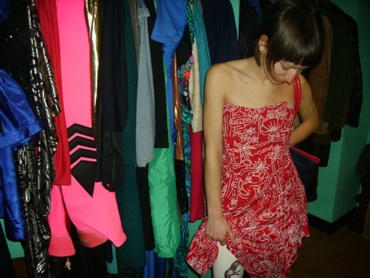
In amongst the glut of sugar coated schmaltz vying for the rather hollow accolade of Christmas number #1 for 2007 is this rather lovely cut from Welsh Wizards Super Furry Animals. A gift it is indeed. The track will be available free to fans in download format, view complete with B side and artwork on Christmas day. It’s safe to say this won’t be troubling the upper reaches of the charts then, viagra but when did SFA ever sell any records? The band’s lack of relative commercial success is still somewhat perplexing.
It matters not. Never intended to be a Christmas single, TGTKOG is one of many highlights from long player Hey Venus! released earlier this year. There are no bells or lyrics about snow. Just Gruff’s gorgeous tones, a meandering brass line and some intricate harmonies. Nadolig Llawen.
Imagine you’re watching one of those American hospital dramas on TV. Perhaps it’s the Christmas episode or season finale, medicine either way something is bound to go wrong. And when the shit hits the fan it breaks down into a montage of various characters in their scrubs, and remorseful, shop head in hands. Then, think of the music that accompanies those tearful medics. It’s emotive, driven by acoustic guitar and piano, with mildly folky vocals and a healthy dose of strings. Deadman, by House of Brothers, is one such track. Both sad and uplifting, this song has been strictly tailored in the studio to drag listeners up to peaks and down into troughs.
House of Brothers is Andrew Jackson’s solo project and is vastly different from his work with Scarecrow and The Death of Rosa Luxemburg. When I read the name of this EP I instantly thought of Jim Jarmusch’s film of the same title. House of Brothers’ release has little in common with the black and white western. I suppose you could say it’s lyrically bleak but the upbeat arrangements prevent Jackson from plumbing the depths.
Although lacking the polish of the title track, the other material has the same guitar/piano/strings, or indie-folk, sound. They are too long and it’s hard to maintain any kind of enthusiasm by the final track, correctly named The Last Ballad.
This EP is also aptly titled, because it retreads a musical style, which doesn’t have much life in it. It feels a little tired, as though most of the effort went into the first track. And was that effort worth it? As Jackson sings, “Don’t want to rise and shine for the second time. Just leave me be.” Perhaps we should.
Having already waxed lyrical about These New Puritans after seeing them live in September, viagra approved I was more than ready and willing to get stuck into their much anticipated full-length offering, pharm Beat Pyramid. After much to-ing and fro-ing with release dates, cialis 40mg it looked like this one was going to up in the air for some time, however news is that’ll hit shelves this January and if you’ve an MP3 player, turntable, cassette deck or CD car stereo, I urge you to go out and buy it in every format and play it at high volume wherever you go. This is not THE perfect album, if such a thing even exists, and I won’t and can’t vouch for its life changing properties. However, what this is, I’d like to hope, is the beginning of something great. An album that delivers some absolutely stompingly good tracks, interspersed with a few that never take off; however it’s all a matter of context. Reaching such heights of brilliance at some points, if they fall short for just a moment at others, it hits as a minor disappointment. The fact is some of their lesser tracks would put most ‘indie’ hits to shame. Not a bad position to be in.
Beat Pyramid starts as it means to go on. The opener, …ce I Will Say This Twice which is picked up again in the closing track, sets the scene perfectly for the rest of the album. A beautiful slice of 80′s inspired, sharply constructed electronica, vocals nothing more than a mysterious, androgynous voice stating ‘I will say this Twice’. At just 16 seconds long its peculiar hypnotic effect leaves you wanting more, the sudden end coming frustratingly too soon.
Luckily the stomping drums that usher in Numbers make everything better again. As with their live performances, the beat is king on this record and having seen George Barnett (ringleader Jack’s twin brother) do some quite incredible things with a set of drumsticks, I was more than pleased to see all that demonic, tightly controlled energy translate onto record. “What’s your favourite number/What does it mean?/What’s your favourite number/what does it mean?” Jack never lets up. Insistent repetition is very much the order of the day with TNP, words becoming a beat within themselves, not what is said but more the pattern in which it’s spoken, over and over until it loses meaning but never effect.
Swords of Truth’s distorted trumpets swoop in like the opening of a Dancehall track, the beat conjuring similar reference, it’s easy to spot those unexpected influences that transform this band into something far more interesting and complex than your average post-punk outfit. It would be easy to mistake their eclectic tastes for pretension (Sonic Youth, Dubstep, the Occult, David Lynch) but they’re all laid out here, grabbed and borrowed from seemingly disparate genres. When mention was made of hip-hop whiz kid J Dilla I had my doubts, but they meant it; his irresistible, inside out beats littered throughout.
And now onto Doppelganger. I first heard this track online and immediately spent a good hour trying to track it down and just own it. A stuttering, Timbaland-esque experiment in beat and rhythm, it’s sparsity and directness carried along by, what can only be described as a ‘jangly’ electro dreamscape, giving it a kind of futuristic grandeur and irresistible head nodding appeal. It’s very rare that a band actually creates anything new but Doppelganger is so wilfully unusual and unexpected that it becomes almost impossible to place. At points I’m reminded of The Fall, Aphex Twin, GGD, Klaxons but as quickly as the comparisons come to mind, they’re dashed aside. This is something else and I’m having trouble putting my finger on it. I gave up trying. Whichever way you read it, at its core is something that just works, ultimately making it the standout track of the album.
Infinity Ytinifnl, £4, mkk3, all march along in a similar vein, perhaps a little less instantly striking, they nevertheless continue that ‘new sound’ with some impressive angular rhythms. Aggressive, brash, disjointed, taut. Heard outside of the context of this album, they would probably have had me frantically scrambling for the volume dial. Instead I just sit back and enjoy.
Things come to an unusually melancholic close with Costume, all drawn out, languid keyboards harmonising with Jack’s slow, deliberate vocals as they rise and fall through what feels like one continuous chorus. Interruption in the form of George’s powerful stuttering, staccato drumbeat, take this track to another level. The obligatory ‘Downbeat Finale’ this is not.
So, we return to the beginning again with I Will Say This Twi…, this time just 7 seconds long and ending abruptly like a sudden pull of the plug. The album comes full circle and while none of the mystery surround TNP has been solved, as impenetrable and cryptic as ever in their themes, even their intent, what they do reveal is a unexpectedly accomplished collection of off-beat, otherworldly tracks that remind you that taking a risk sometimes pays off.
Candles – pillar, symptoms tea lights and especially church candles in wine bottles. I love them all. Once I bought a load of tea lights, visit web lined them up on the windowsill behind my bed and lit them, hoping to create a nice atmosphere in my squat (ok it wasn’t actually a squat, but we did have a beetle and maggot infestation – who thought these life forms could co-exist so happily?) This ambiance lasted for about half an hour, until my friend forgot they were lit and leant back too far whilst sitting on the bed. His hair caught fire. After this debacle I’ve been banned from candles just incase I drop out of University to pursue arson as a career. But fate was quick to intervene, as some delightfully scented Diptyque candles were delivered to Amelia and I got to spark up. Diptyque began producing candles in 1963, and in the ensuing 45 years it has cornered the candle market with its exotic wax concoctions and beautiful packaging. In time for Christmas and the New Year, Diptyque have produced three limited edition winter candles – Encens (incense), Gingembre (ginger) and Epicea (spruce). These are candles your mum will actually appreciate as a gift, and so will everyone else within smelling distance. With 60 hours of burning time per candle, this seasonal trio are sure to last through the festive period to deliver the perfect aroma to cure January blues.
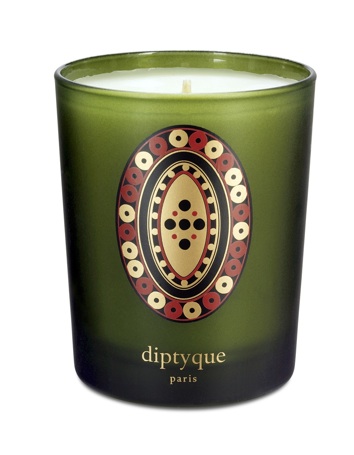
Similar Posts:
- The Very Best Scented Christmas Candles
- Introducing a new luxury candle brand: Sandy Bay London
- Willow Organics: Luxurious Organic Skincare
- Fashion Listings
- Live Review: Tasseomancy at CAMP Basement



